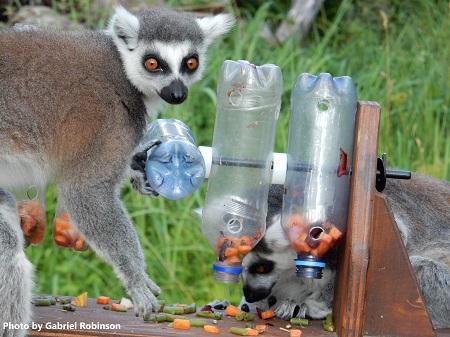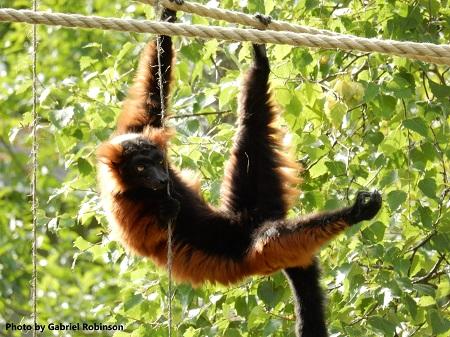Discussion - Behavior
Ring-tailed lemurs’ behavior

No enrichment:
As in previous studies, they mostly rested; locomotion and feeding/foraging were the second-most frequent behaviors; and interaction was very infrequent.
Enrichment:
They rested less and moved more when enrichment was present, which matches previous studies. However, the results were not statistically significant, maybe because the effect was short-term.
Visitor presence:
The ring-tailed lemurs rested more and moved less when there were visitors. However, the results were not statistically significant, maybe due to habituation to visitors and the effect of meteorological conditions.
Meteorological conditions:
Their behavior was strongly affected by meteorological conditions. They rested more and moved less if sunny and warm, also main conditions with visitors present.
Red ruffed lemurs’ behavior

No enrichment:
Their skittishness may have influenced how much they rested (unexpectedly often) and how much they moved (infrequently) compared with previous studies.
Enrichment:
They significantly increased feeding/foraging with food enrichment and locomotion with structural enrichment, suggesting a strong effect of enrichment.
Visitor presence:
Visitor presence seemed to negatively influence the lemurs’ behavior by increasing resting and decreasing locomotion, maybe due to skittishness combined with the effect of meteorological conditions.
Meteorological conditions:
Meteorological conditions significantly affected their behavior. They rested more and moved less if sunny or warm, with more visitors present, and moved more if rainy or cold, with fewer visitors or ring-tailed lemurs.
Responsible for this page:
Director of undergraduate studies Biology
Last updated:
05/30/21
